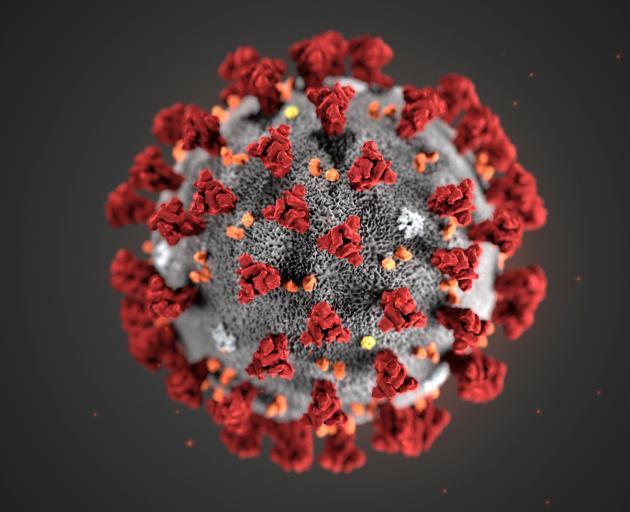The problem: Healthcare Associated Infections in New ZealandHealthcare associated infections (HAI) remain a major cause of patient morbidity and mortality. (1) The term HAI covers a wide range of infections. The most well-known include those caused by methicillin-resistant Staphylococcus aureus (MRSA), Clostridium difficile (C. difficile) and Escherichia coli (E coli), and more recently the threat from antibiotic-resistant bacteria which is growing significantly (1). In New Zealand it is estimated 1 out of every 20 hospital patients will get an HAI. Currently we do not have a full understanding of the economical prevalence and impact it has for our health system. Early research suggested the impact to two of New Zealand's DHB's being up-to $19 million annually (2). Canterbury hospital reporting the average daily cost of a patient in their ICU wards is $5,500 (3). There is numerous ways HAIs are developed with the healthcare setting. An estimated 20% to 40% of HAI in the USA have been attributed to cross infection via the hands of health care personnels. (8) |
|
Dancer 2008 & Trillis 2008 showed the particular incidence of close quarter surfaces and their relative risk of contamination. Figure 1 (4)
|
Surface ContaminationSurfaces within the hospital are often contaminated with harmful bacteria and patho-gens. Environmental contamination is often the root cause of infection transmission (4). With increasing rates of HCAI's and the impact on patient health and healthcare costs there is a need for urgent healthcare standardisation around infection control. Research suggests that modern infection control programs must utilise every innovation available to effectively sanitise and reduce the risk of contamination. (4,5)
|
Infection Control: Hospital CurtainsPrivacy curtains are used throughout health care facilities in shared rooms, emergency departments, pre-op, post-anesthesia care, and intensive care units to provide patients with needed privacy during interactions with health care staff and during family visits (4). Due to their frequent use curtains have been suggested as a root cause of transmission in a number of studies (4) Standardised hand cleaning protocols are an effective measure in reducing healthcare practitioner transmission during patient interaction. Although Kramer et al. 2006 showed health care workers were less likely to wash their hands prior to touching intimate surfaces ie Curtains. which increased the transmission of micro-organisms onto these surfaces(7). It is well established and announced in the literature the contamination risk associated to standard hospital curtains (1,2,4,5,6). In fact, in one study, after just one week of hanging, 92% of curtains were found to be contaminated by various pathogens [Ohl et al. 2012]. Regular cleaning and changing of linen hospital curtains both is costly and time consuming and doesn't completely reduce the risk from contaminants found in the laundry process itself. (4)
|

|

|
|
Our range of antimicrobial curtains is used globally and has been shown to reduce the rates of bacterial build up showing Log 3-Log 5 in protection & eliminates up to 99.999% of pathogens (4). Click here: Hygenica Hospital CurtainsFantex® is a unique antimicrobial agent that acts quickly and effectively to kill a wide variety of bacteria, viruses and fungi to provide safe and long lasting surface protection.
Weber reports that hospital intervention with Fantex® disinfectant curtains correlates with a median 20.1% reduction in HCAIs compared to standard curtains.
|
|
|
|
Fantex® and CoronavirusFantex® has been tested against feline coronavirus, a laboratory strain of coronavirus that is used to validate activity against this type of virus (including MERS and SARS). It was independently tested to EN 14476 Quantitative suspension test for the evaluation of virucidal activity in the medical area, the official European standard for this type of activity, and passed with a log 4.17 reduction in virus level in 5 minutes contact time. Fantex® fabric has been tested against bovine coronavirus, the recommended reference strain for validation of efficacy against SARS-CoV-2, which causes COVID-19. The testing was performed by Dr. Brill + Partner GmbH, a leading viral testing laboratory. Fantex® fabric demonstrated a log reduction in virus of 3.63 in a contact time of 15 minutes |
References1)Luk S, et al. (2019). Effectiveness of antimicrobial hospital curtains on reducing bacterial contamination—A multicenter study. Infection Control & Hospital Epidemiology 2019, 40, 164–170. doi: 10.1017/ice.2018.315 2)Graves N, Nicholls TM, Morris AJ. Modeling the costs of hospital-acquired infections in New Zealand. Infect Control Hosp Epidemiol. 2003 Mar;24(3):214-23. doi: 10.1086/502192. PMID: 12683515. 3) https://www.cdhb.health.nz/about-us/document-library/cdhb-10089-daily-bed-cost-icu-cicu/ 4) Wheeler, M., Thomas, S.K., Carter, T., Alvarez, M., & Pedreschi, A. The Role of Patient Privacy Curtains in HCAI Transmission : The Effect of a Novel Disinfectant Intervention in Acute Care Hospitals. 5) Sanguinet, Jennifer & Lee, Chris. (2021). An effective and automated approach for reducing infection risk from contaminated privacy curtains. American Journal of Infection Control. 10.1016/j.ajic.2021.06.004. 6) Al-Tawfiq JA, Bazzi AM, Rabaan AA, Okeahialam C. The effectiveness of antibacterial curtains in comparison with standard privacy curtains against transmission of microorganisms in a hospital setting. Infez Med. 2019 Jun 1;27(2):149-154. PMID: 31205037. 7) Kramer, A., Schwebke, I., and Kampf, G. (2006), ‘How long do nosocom-ial pathogens persist on inanimate surfaces? A systematic review’, BMC Infectious Diseases, 6, 130-30 8) Weber DJ, Rutala WA, Miller MB, Huslage K, Sickbert-Bennett E. Role of hospital surfaces in the transmission of emerging health care-associated pathogens: norovirus, Clostridium difficile, and Acinetobacter species. Am J Infect Control. 2010 Jun;38(5 Suppl 1):S25-33. doi: 10.1016/j.ajic.2010.04.196. PMID: 20569853. |








